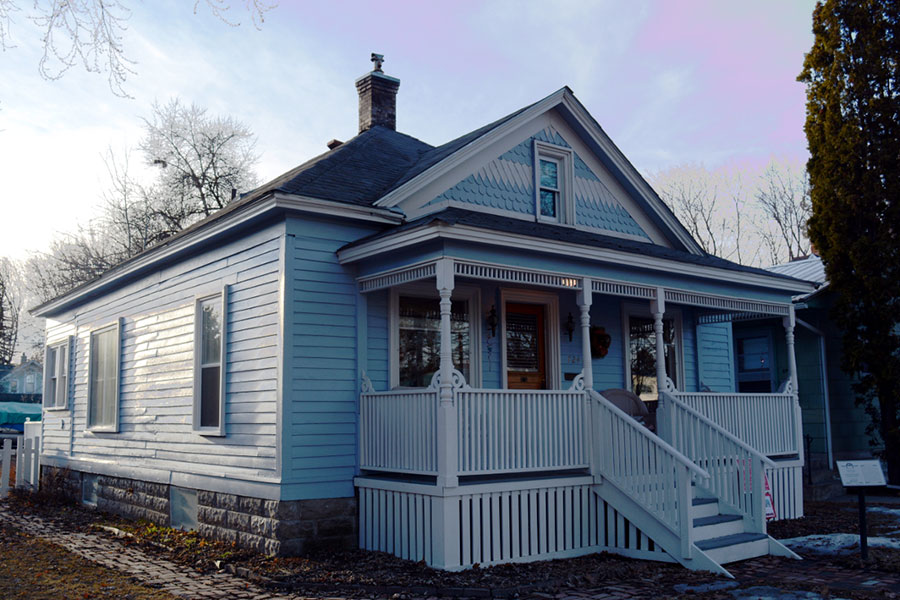The house at 724 First Ave. W. is a noteworthy example of a Queen-Anne Foursquare – one with much of its original form, style and way-of-life intact. It’s also a good example of how things are sometimes preserved more by chance than choice.
For example, there’s still a claw-foot tub in the bathroom (recalling times when bathing was synonymous with soaking in a tub). The kitchen has near-original features and a charmingly simple layout (a rarity indeed, considering the rampant stainless steel/granite counter-top craze of recent times). The well-preserved transom windows are showstoppers, and reminders of the technology of yesteryear. And perhaps even more remarkable, much of the original hardware remains intact. From the doorbell plate (still at the center of the door) to the doorknob backplates of the interior doors, the home offers many textbook examples of how Queen-Anne style homes were often adorned with Eastlake patterns.
Yet beyond style and aesthetics, the home also provides many hints about a bygone way of life. For example, the bedroom – with its own sink – harkens to a time when such an added amenity was truly a “modern” convenience.
The home was originally built in 1903 by William F. Eckelberry. Eckelberry was a postal clerk, and one of the many pioneer Eckelberry children who arrived in the Flathead Valley in 1887.
In 1910, Eckelberry sold the home to Ora and Minnie Jones, the namesakes of the residence. Ora was a teller for First National Bank of Kalispell — the first bank chartered for business in Kalispell (June 19, 1891). While First National Bank originally conducted business in a wooden shack (literally), it soon occupied the first brick building ever built in Kalispell (at 139 Main Street). While there, Ora (nephew of J.T. Jones, one of the organizers of the bank) rose through the ranks, and achieved prominence and remuneration that afforded a larger lifestyle (and a more commodious dwelling). But during their time in the home, the Joneses kept company with some of the prominent names of early Kalispell, names such as Alward, Good, Keith, Lamb, Houston and Webster.
In 1923, the Joneses sold the home to Lillian Wooster, who incidentally added the back wing to the residence (after all, home renovation was all the rage during the Roaring ‘20s). And while the home has had dozens of owners and tenants since, Lillian’s addition is somehow the only significant change about the house.
The rest — quite inexplicably — has tastefully been added or carefully managed to preserve the original integrity of the home. Yet such preservation is perhaps a bit more paradoxical: that is, former owners likely ignored making “updates” (to spend less and make more on their investment), while others kept things “new” by covering up things “old,” which sometimes preserves things quite well actually.
For example, fish-scale shingles and “mismatched” siding weren’t always “vintage” or otherwise appreciated as they are today. In fact, beginning in the 1950s, many of the historic elements we marvel at today, were considered dreadful reminders of the past. This partly explains why the once-fanciful patterned shingles adorning the front of the house survived. That is, they were covered up for years, only to be rediscovered during a renovation in the late 1990s. Fortunately, it was a time when things “vulgar” had become vogue once again.
Likewise, many features of this fine Queen Anne home remain remarkably intact both inside and out (whether by choice or by chance) and can be appreciated still today.
This house is currently on the market and will be open to preview on March 21st, from 11 a.m.-3 p.m.
Jaix Chaix is a columnist and author of Flathead Valley Landmarks and other local history books that are available for sale at the Flathead Beacon at 17 Main St. in Kalispell.
